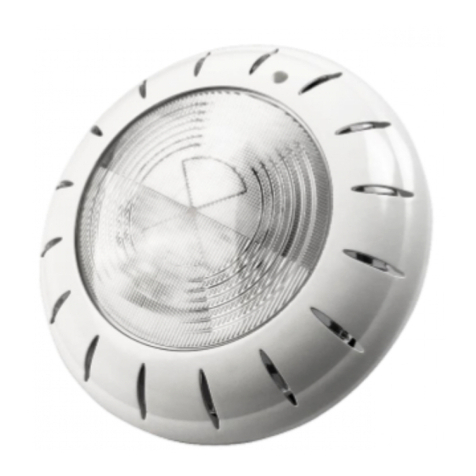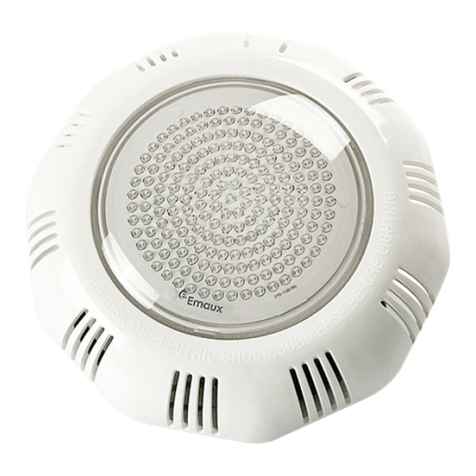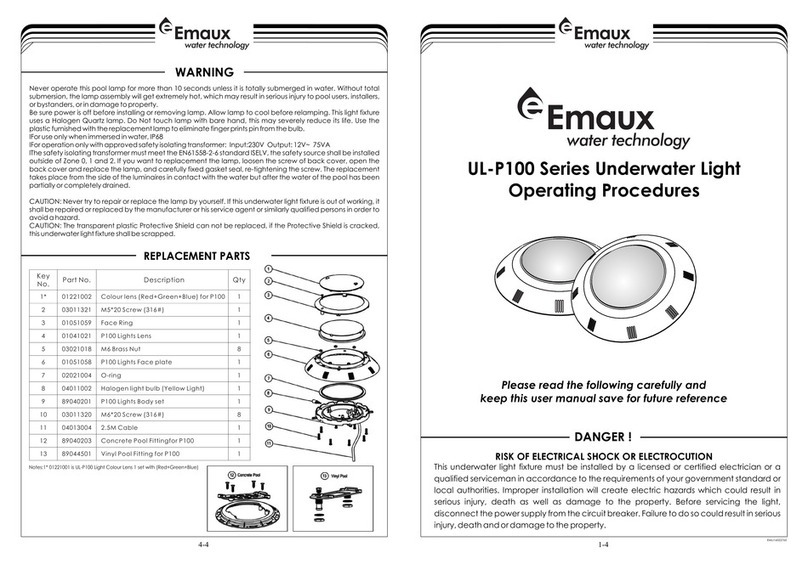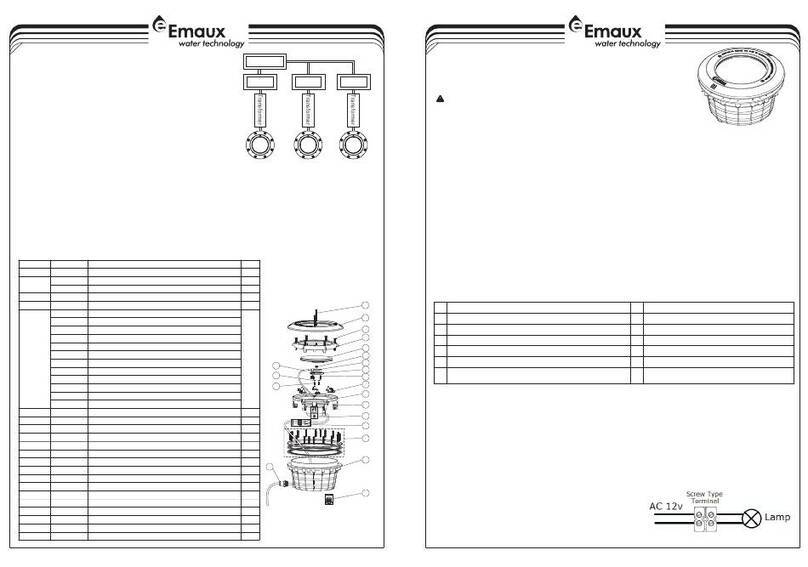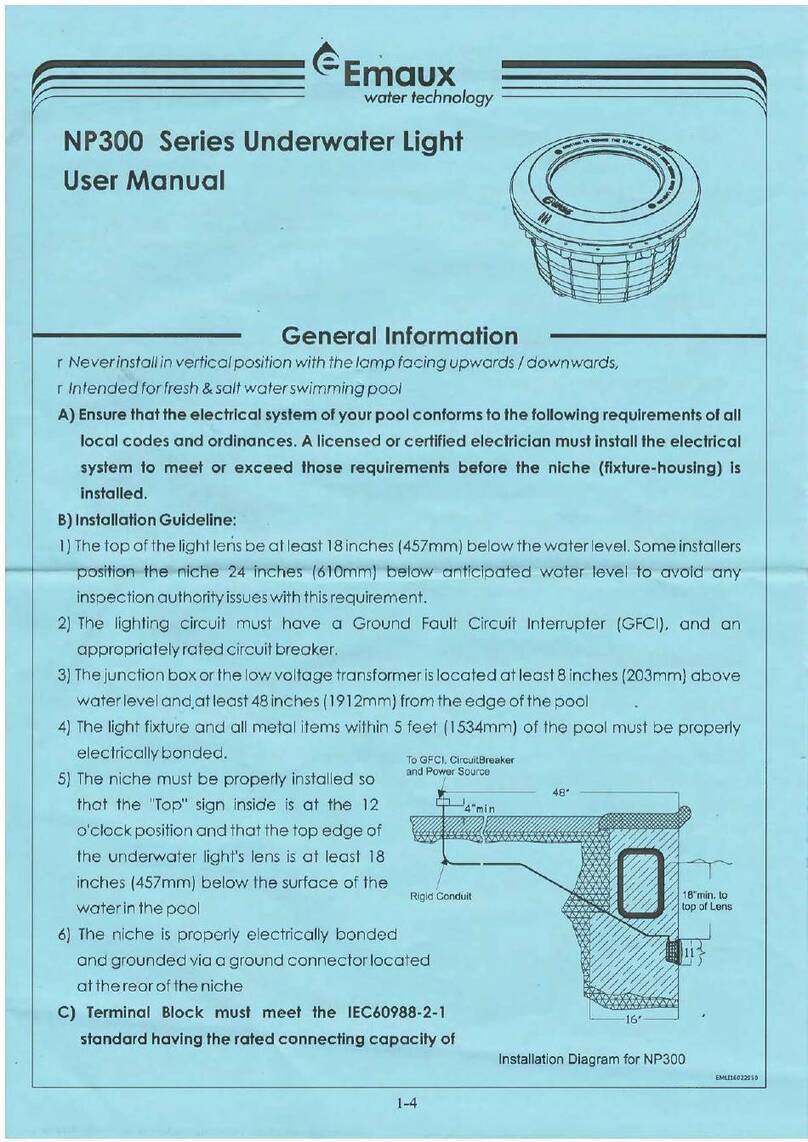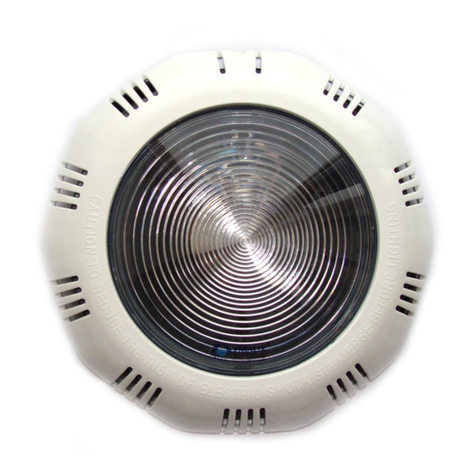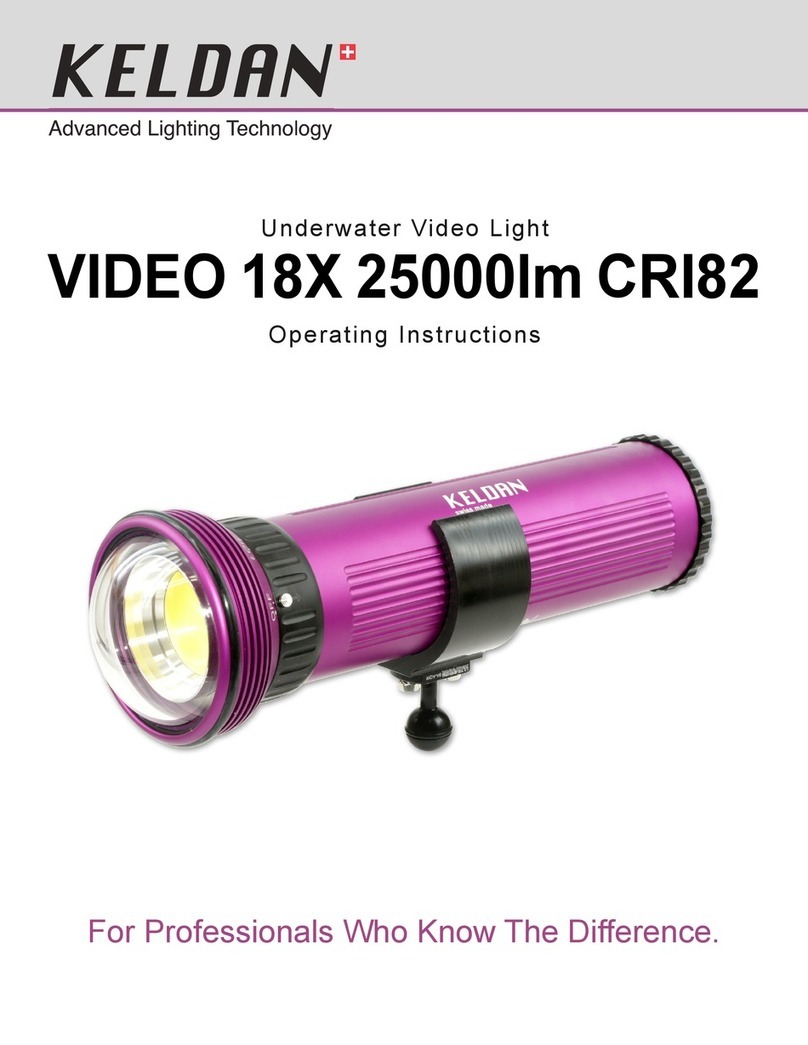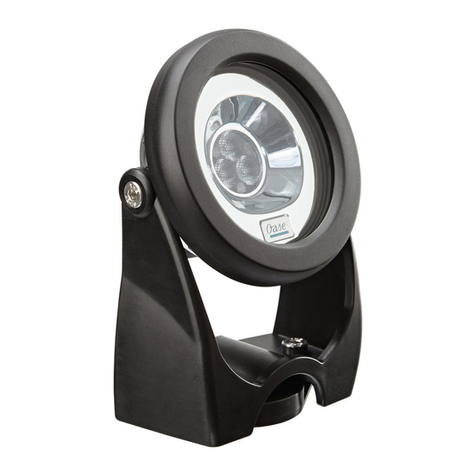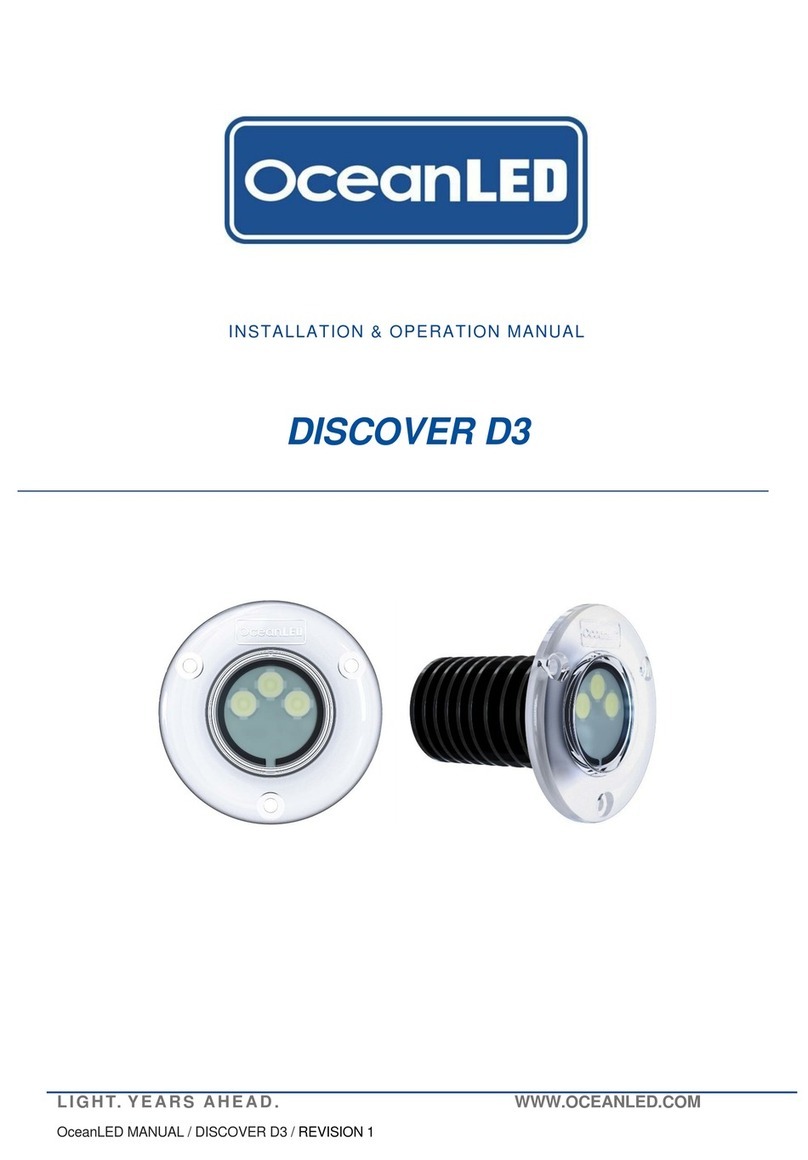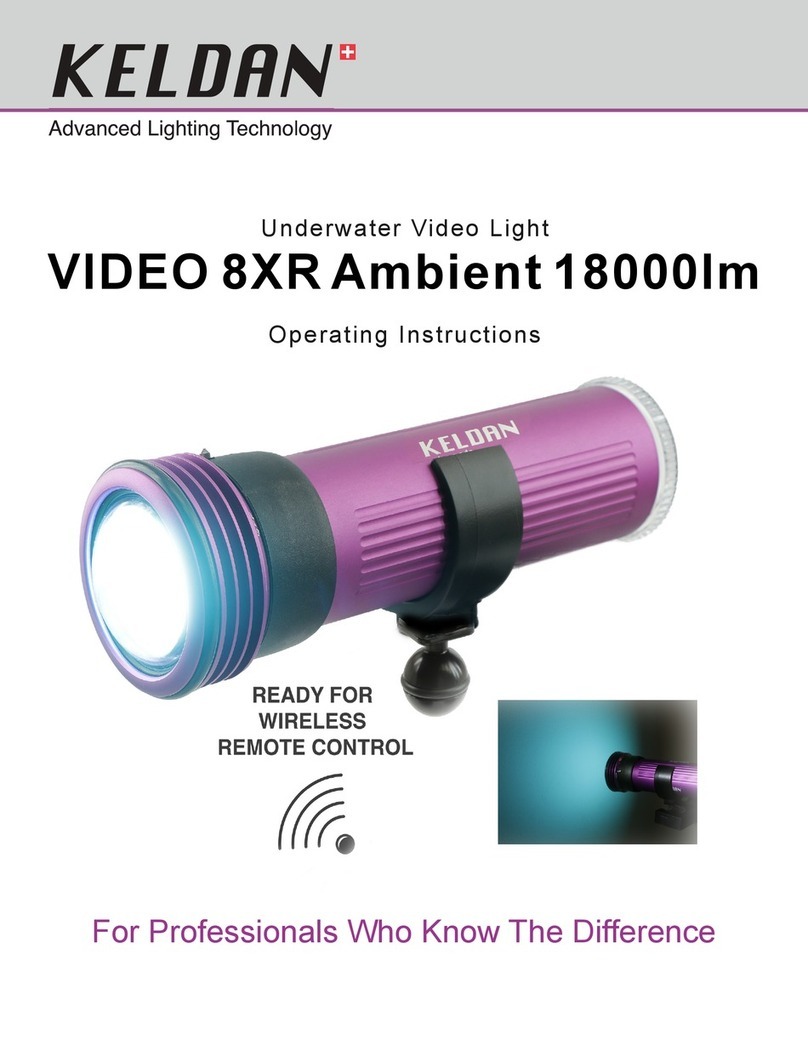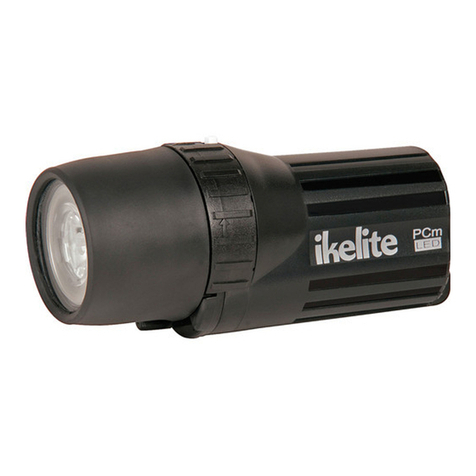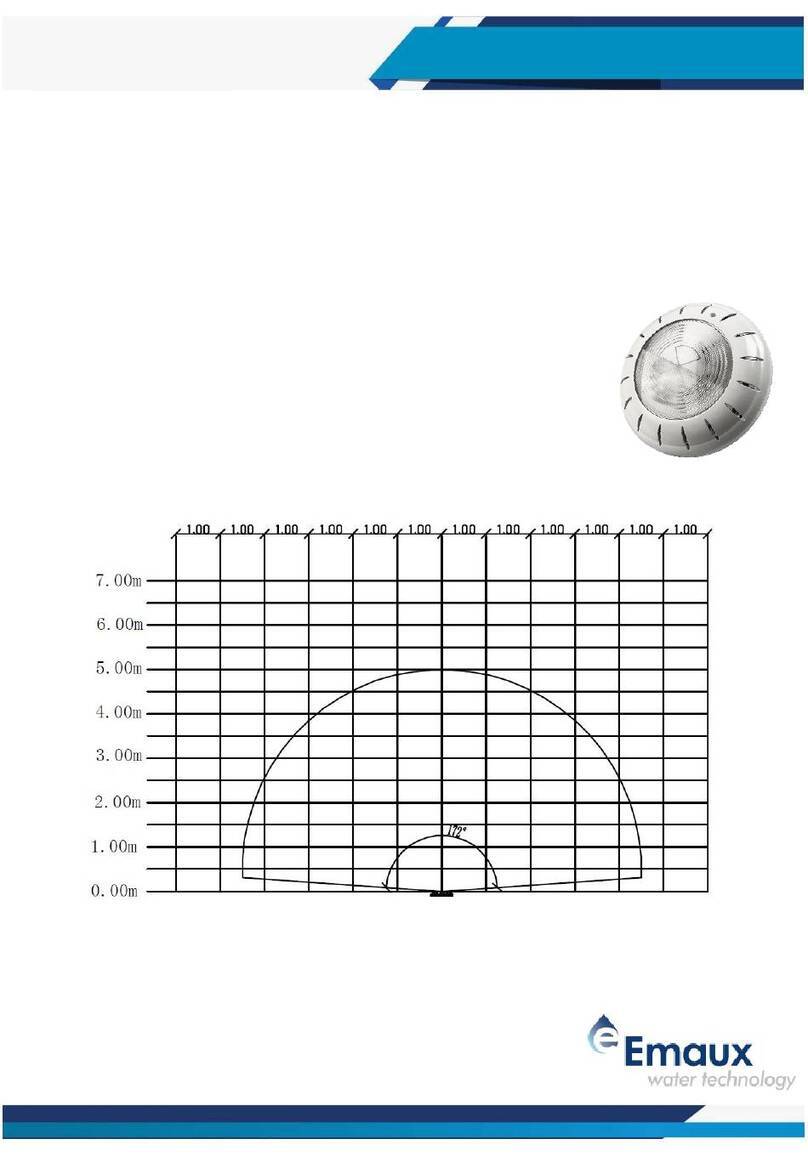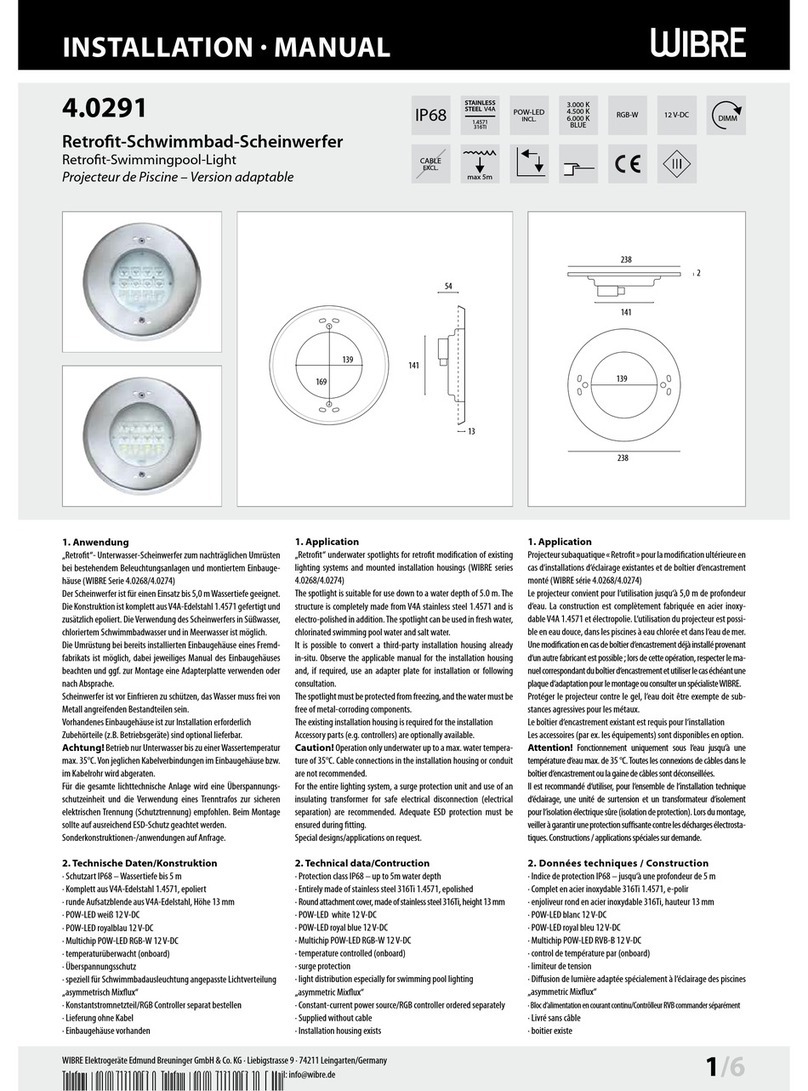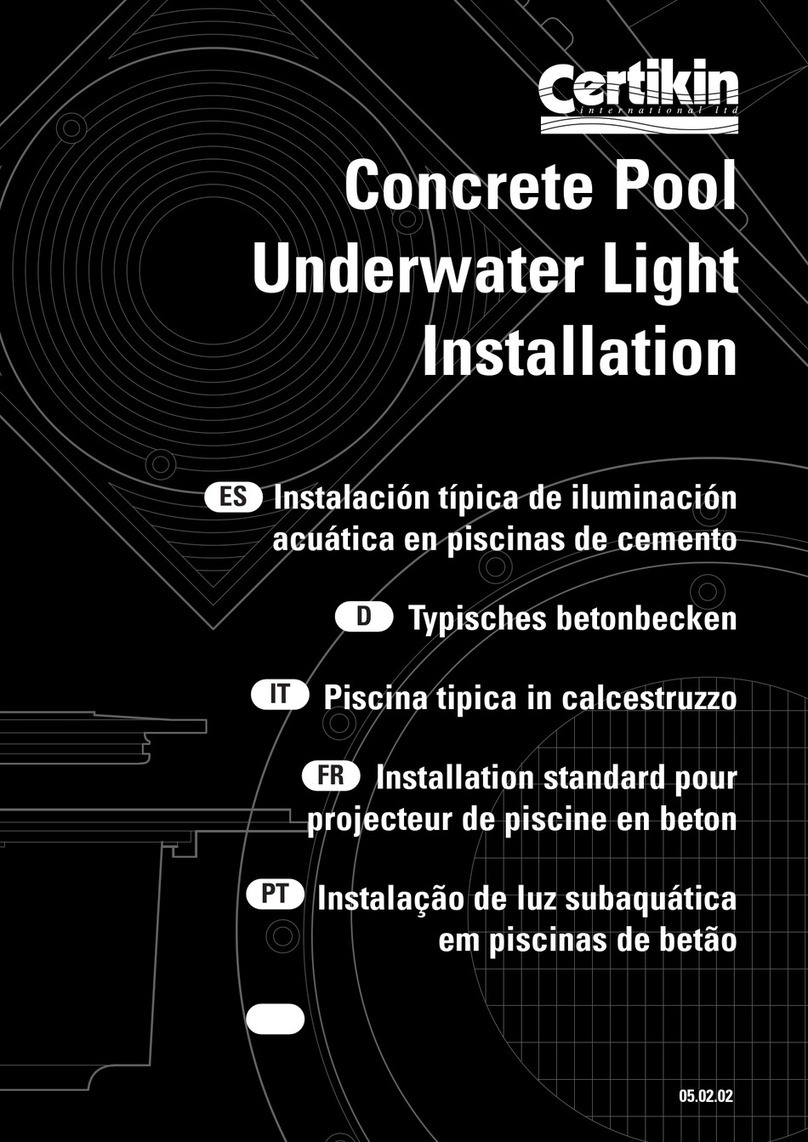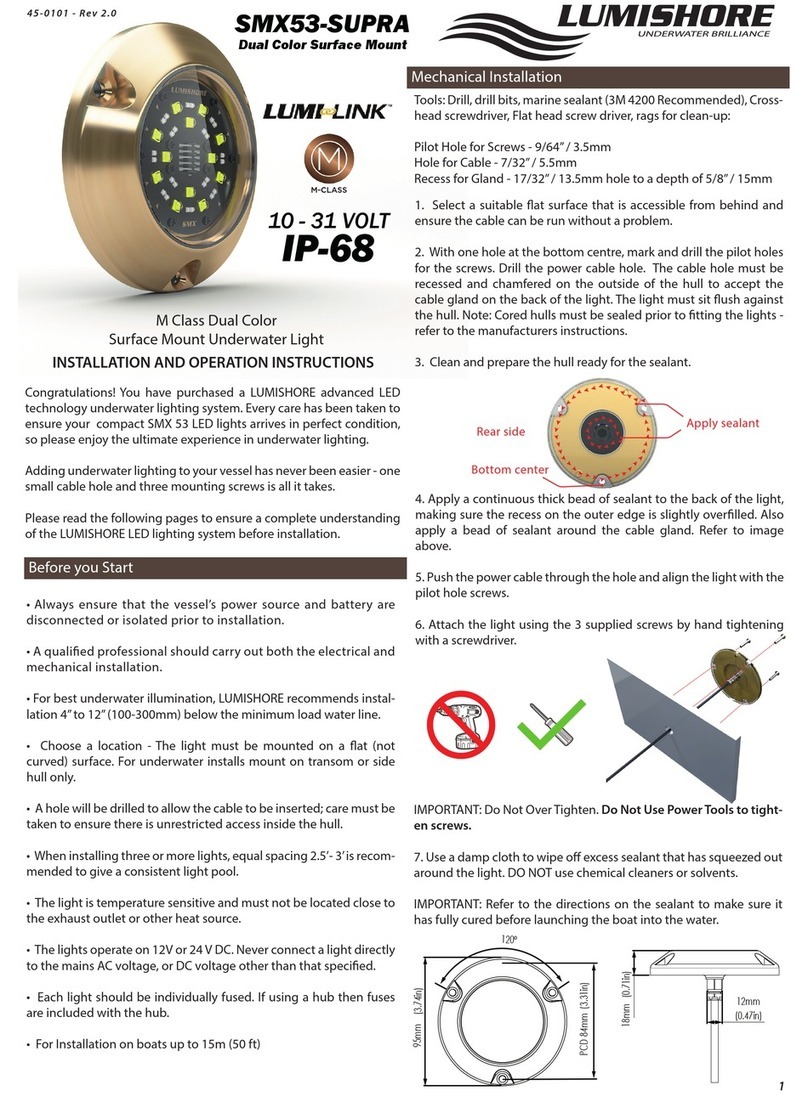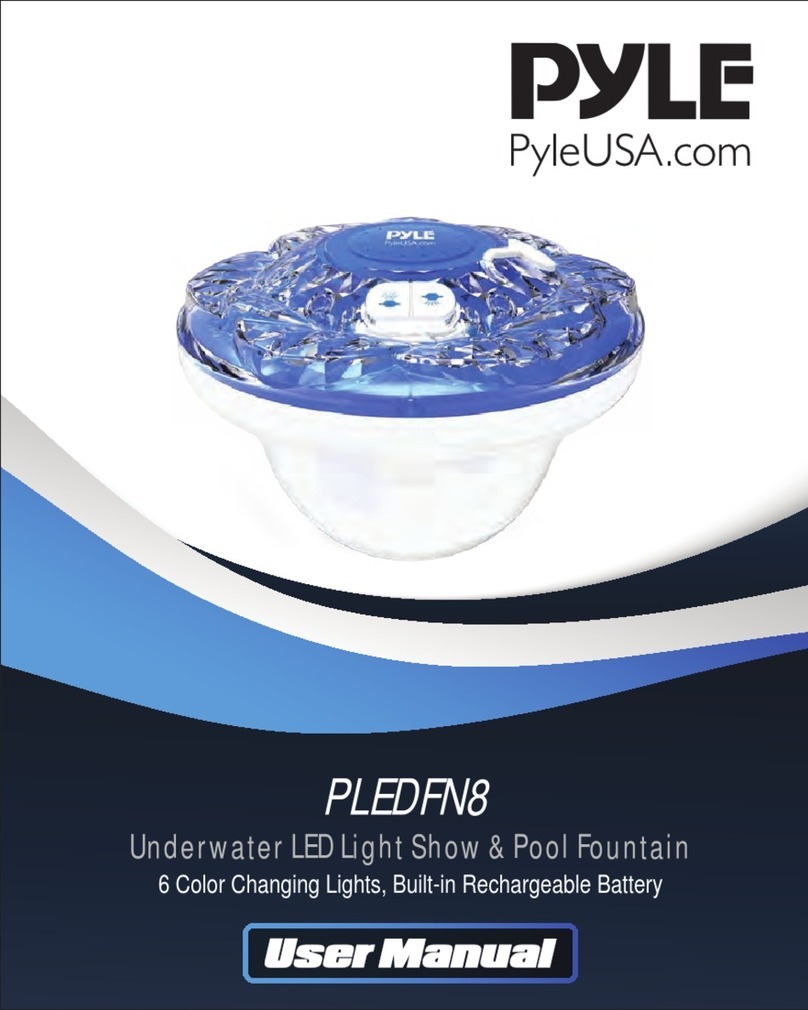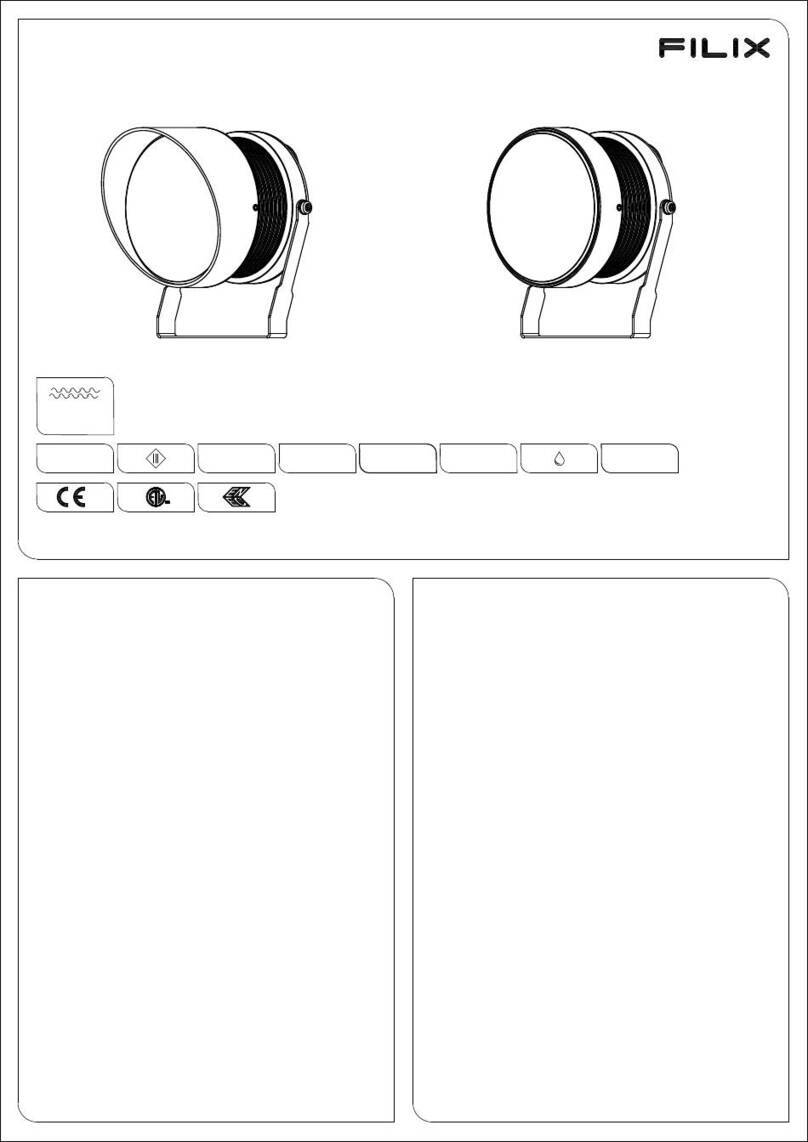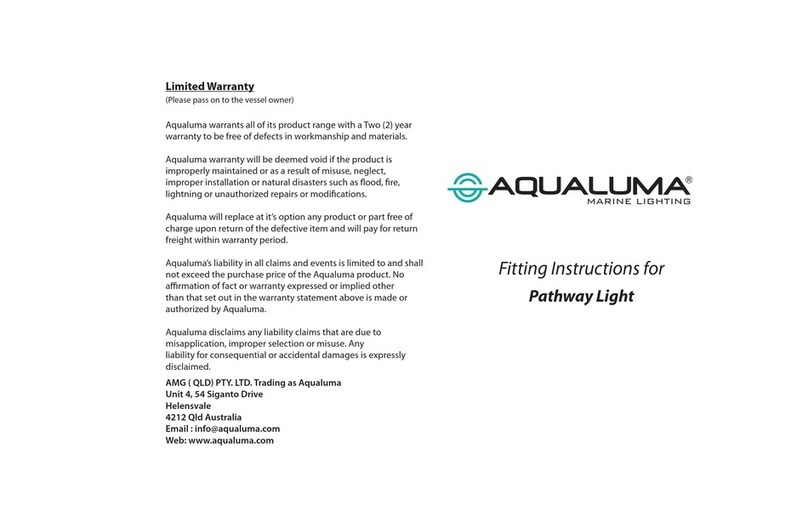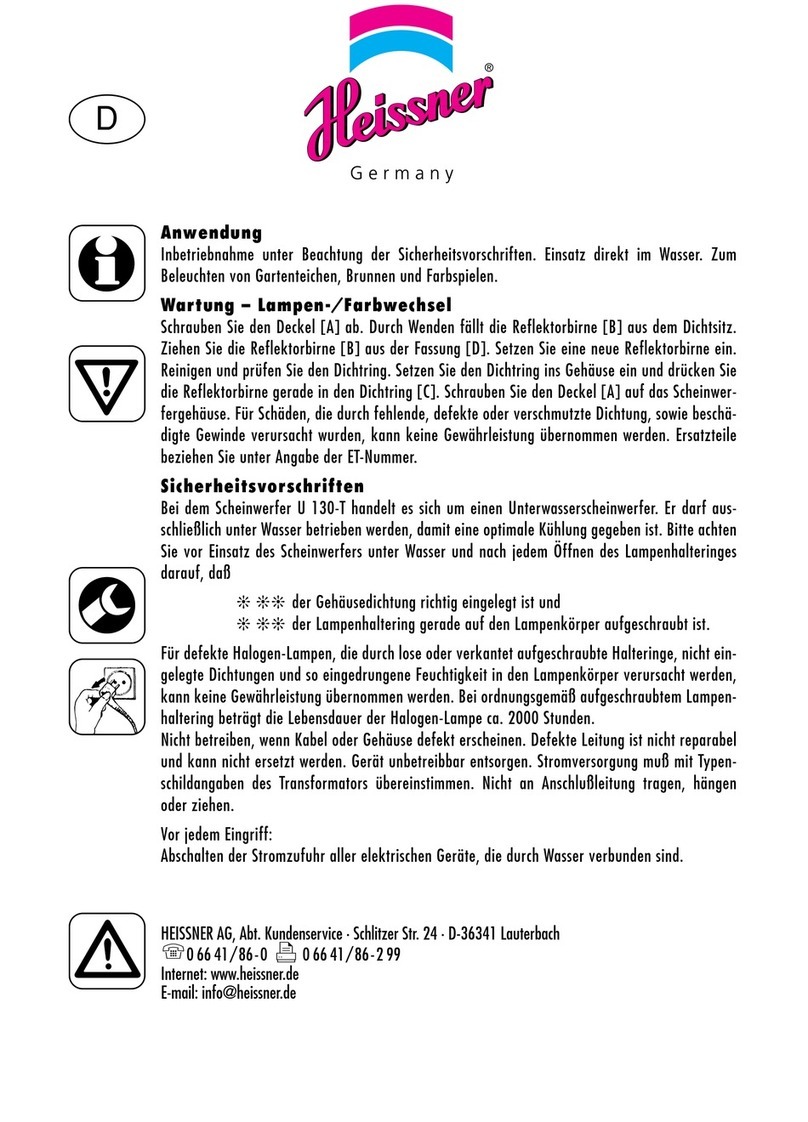
Figure 2
≤30m
Transformer
Light
Figure 1
ON/OFF Switch
Light
Transformer
Light
Master Switch
Light
ON/OFF Switch ON/OFF Switch
INSATALLATION OF THE UNDERWATER LIGHT
4-3
4-2
Transformer
Transformer
6) Fill the pool until the underwater light is completely submerged in water before operating the light for more
than 60 seconds. Turn on main switch or circuit breaker, as well as the switch which operates the underwater
light itself, to check for proper operation.
Never operate this Underwater Light for more than 60 seconds unless it is totally submerged in water. Without
total submersion, the light assembly will get extremely hot, which may result in serious injury to pool users,
installers, or bystanders, or in damage to property.
5) Replace the light assembly into niche and tighten special pilot screw.
Use only the special stainless steel pilot screw provided with Underwater Light. Failure to use the screw provided
could create an electrical hazard which could result in death or serious injury to pool users, installers or others
due to electrical shock.
Always disconnect power to the pool light at the circuit breaker before servicing the light. Failure to do so could
result in death or serious injury to installer, servicemen, pool users, or others due to electrical shock.
A) Turn off main electrical switch or circuit breaker, as well as the switch which operates the underwater light
itself.
B) You will need the following items :
A LED panel, refer to Table 1.
Replace a color panel of being needs. Failure to replace lamp with the same type of lamp will damage the
light assembly and may cause an electrical hazard resulting in death or serious injury to pool users, installers, or
others due to electrical shock, and may also cause damage to property.
WARNING
WARNING
REPLACING A LED PANEL ONLY
DANGER
A The electrician must complete preparatory steps before light fixture is installed; see Figure 1.
)
1 Ensure that the pool meets the requirements of the current National Electrical Code and all local codes and
ordinances. A licensed or certified electrician must install the electrical system to meet or exceed those
requirements before the underwater light is installed. Some of the requirements of the National Electrical
Code which the Pool's electrical system must meet are as follows.
a) The lighting circuit must have a Ground Fault Circuit Interrupter (GFCI), and must have an appropriately
rated circuit breaker
b) The Junction Box (or, for 12 volt models, the low voltage transformer) must be located at least 20CM above
water level, at least 10CM above ground level, and at least 120CM from the edge of the pool; see Figure 3.
c) The light fixture and all metal items within 152CM of the pool must be properly electrically bonded.
d) The wet niche must be properly installed so that the top edge of the underwater light's lens is at least 45.5
below the surface of the water in the pool; see Figure 3.
e) The wet niche must be properly electrically bonded and grounded via the No.8 AWG ground connector
located at the rear of the niche; see Figure 3.
NOTE: The pool or spa electrical system can be verified with a pool and Spa Electrical Qualification Test kit. The
electrical system inspection using this kit must be performed by trained and certified personnel.
2) To be certain that pool's electrical system meets all applicable requirements, the electrician should also
consult the local building department.
)
1) Feed cord through conduit to Junction Box, leaving at least 120CM of cord at the light fixture to coil around
the light; see Figure 1. This 120CM of cord around the light allows the light to be serviced after the pool is filled
with water.
2) Cut the cord at the Junction BOX, leaving at least 15CM of cord to make connections.
3) Strip 15CM of the outer cord jacket to expose the three insulated wires. Be careful not to damage the
insulation on the three (3) inner wires.
4) Connect all three (3) wires to the corresponding circuit wires in the Junction Box, and secure the Junction
Box cover in place.
B) Steps to perform after the electrical system requirements are met.
120CM MIN.
2.5 CM RIGID CONDUIT
#8 AWG GROUND CONNECTOR BONDED TO REBAR
TO GFCI. CIRCUIT
BREAKER AND
POWER SOURCE
CONCRETE MUST BE CUT BACK
AROUND NICHE TO ALLOW FOR
A COMPACTED PLASTER SEAL.
45.5CM MIN. FROM WATER LINE
TO TOP OF LENS
10CM MIN.
20CM MIN. JUNCTION BOX OR
LOW VOLTAGE TRANSFORMER
Figure 3
INSTALLATION NOTES
1) You should follow the procedures closely when installing the
light.
2) It is recommended to install a light every 20m , the approximate
exposure area of each unit.
3) The lights should be installed in the direction that they will not
shine directly into the house.
4) For training or competition pools, the lights must be installed on
the sides in order to prevent swimmers from seeing any glare.
5) Nothing should be placed on the poolside directly above the
lights for ease of future maintenance.
6) If the wires are connected inside the lights, you must seal the
connections with leak-proof tapes or products with the same
function.
7) The cables connecting the lights and the transformers must be
2
at least 6mm and the distance between them must not
exceed 30m (Figure 2); otherwise the lights will not function
properly.
2
C) Control
1) When the light is connected to the transformer
directly, the on/off switch controls the colour changes
(Associating a light with a transformer and an on/off
switch is recommended; If you want all the lights to
change colour at the same time, install a master
switch, Figure 1).
2) If applicable, when the light is connected to the
transformer and the transformer to the optional control
box, the control panel on the control box and its
remote control controls the colour changes (See the
Control Box Manual for details).




